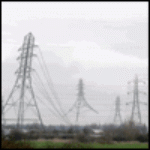 |
Audio Asylum Thread Printer Get a view of an entire thread on one page |
For Sale Ads |
 |
Audio Asylum Thread Printer Get a view of an entire thread on one page |
For Sale Ads |
73.71.149.190
Learned from Uncle Stu how substituting brass for steel screws in speakers and shielding an amplifier's toroidal transformer substantially increased the clarity and detail of reproduced music as magnetic fields are removed.
Somehow overlooked the small magnetic steel screws in the amplifier junction box where the power coming in meets the inputs for the toroidal transformer. So today substituted brass screws for them and there was an immediate gain of ~ 10% increase in clarity; many previously lost smaller details emerged and the music became more relaxed/ open.
Brass replacement screws may have larger heads that do not sink safely into the plastic junction box like the originals and exposed heads means risk of shock if touched together. So each must first consider the risk to life and limb for themself.
Follow Ups:
I remember Stu discussing this here. I first read about it reading material by Michael Green or Mike Vans Evers a couple decades back. Not sure which, but both men have shared a wealth of knowledge on tuning.

nylon tie straps are great for holding open core torroids in place on a chassis.
moray james
Nt
"there was an immediate gain of ~ 10% increase in clarity"
A veil was lifted?
Yes, it lifted a fuzzy veil of magnetic pollution that had previously hidden smaller musical detail, caused a degree of listening fatigue, and somewhat diminished the size of the sound stage. This is a definite improvement but cannot be comparared in scale to the larger benefit of reducing exposure of the amplifier circuit board/ other internal components to magnetic interference by shielding the toroidal transformer.
For anybody interested, the LFD RCA input unit (what LFD calls 'Interconnect PCB Board - Phono Block') comes with four magnetic stainless steel screws retaining it to the chassis. So compared nylon to brass as replacement screws and found nylon screws sounded better (less bright).
True, some grades of stainless contain more iron than other grades, but as I understand it, most stainless steel screws are "Austenitic", which means they have a very low ferrous content and are therefore essentially non-magnetic. Did you actually check the screws you removed to see if they were magnetic? If they were, you might be able to find Austenitic stainless steel screws to replace them (they are more common than other types of stainless screws), in which case they might fit better than the brass.
Lew,
Agreed. The Walker Audio Talisman is always close at hand in its secondary role of instantly revealing whether stainless-steel wood or machine screws are magnetic. IFI exclusively use austenitic stainless steel machine screws but many audio manufacturers for some curious reason don't. Fit? I use exactly the same size/ pitch/ length brass replacements and eliminate the flash from their heads with a black marker pen. Nylon screws lack the rigidity to curb vibration so I use them minimally near RCA terminals where brightness is a concern.
FYI Using the new generation of $49 noise-canceling AC adapters from IFI with both the first-generation iUSB Power and iTube Buffer appreciably drops the noise floor to allow the music to become more open and revealing of detail. Plugging an AC iPurifier into the duplex from which the MacBook Air is powered (on a separate circuit to those used by analog and digital components while playing music) provided a third comparable 'veil-lifting' improvement. Good floor-dropping value for $200 but enclosing the sides of each speaker magnet/ amplifier toroidal transformer with MagnetShield, replacing the toroidal transfomer retaining screw with a nylon tie, and substituting brass for magnetic stainless steel speaker/ amplifier screws is infinitely more work but far more productive noise reduction for the dollar. And, of course, first installing brass screw inserts in the soft coil speaker cabinets both front and rear eliminates the sound image blurring caused by the inability of tapered wood screws under vibration to solidly retain their hold on soft composite material.
That's all you'd need to detect ferrous stainless steel.
Did any jaws drop?
SB
No. Testing only provides incremental sound/ knowledge improvements in my experience and the tweak deities make it interesting by laughing at expectations!
How about the space around the instruments, did that improve ?
To my ears, the quality of image definition/ space reflects the amount of vibration while the exposure of small detail/ contrast/ ease of listening reflects the exposure to EMI and noise pollution. So space was not the primary benefit.
However I did substitute brass insert + screws for the brass wood screws on the top and bottom pairs of holes on the rear panel of my speakers today. (The middle two pairs of holes are too close to the edge of the 'wood' cabinet.) Having heard marked reduction in vibration/ improvement in sound image tightening from doing that on the tweeters, mid-range and bass on the front in the past, I had zero idea what to expect from doing something so relatively periferal on the back. To my surprise it audibly tightened up the sound images further for greater solidity. So minimizing vibration around the speaker cable input connections and the bottom of the cross-overs in this way definitely provides more space as vibrational blurring shrinks around the solid definition of sound images.
| FAQ |
Post a Message! |
Forgot Password? |
|
||||||||||||||
|
||||||||||||||
This post is made possible by the generous support of people like you and our sponsors: